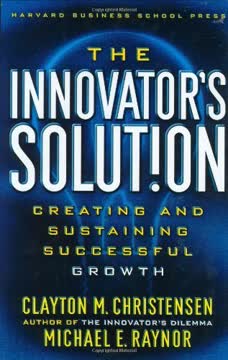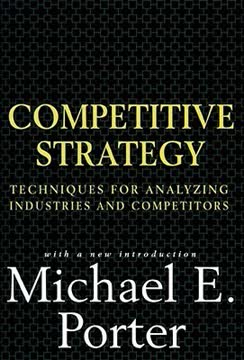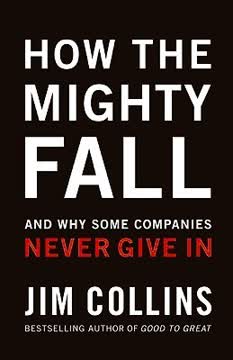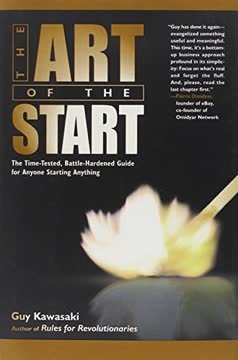Key Takeaways
1. Create Meaning: The Foundation of Great Organizations
The best reason to start an organization is to make meaning—to create a product or service that makes the world a better place.
Purpose drives success. Great organizations are built on a foundation of meaning, not just profit. They aim to improve the world in some way, whether by increasing quality of life, righting a wrong, or preserving something good. This central purpose motivates employees, attracts customers, and guides decision-making.
Meaning manifests differently across various types of organizations:
- For-profit companies: Developing innovative products or services
- Non-profits: Addressing social issues or unmet needs
- Schools: Educating and empowering future generations
- Religious organizations: Providing spiritual guidance and community
By focusing on making meaning, entrepreneurs create a compelling reason for their organization to exist beyond financial gain. This deeper purpose becomes the driving force that propels the organization forward, even in challenging times.
2. Craft a Powerful Mantra, Not a Mission Statement
Forget mission statements; they're long, boring, and irrelevant. No one can ever remember them—much less implement them. Instead, take your meaning and make a mantra out of it.
Simplicity is key. A mantra is a short, memorable phrase that captures the essence of your organization's purpose. Unlike lengthy mission statements, mantras are easily internalized by employees and communicated to customers.
Examples of powerful mantras:
- Nike: "Authentic athletic performance"
- Disney: "Fun family entertainment"
- Starbucks: "Rewarding everyday moments"
To create your mantra:
- Distill your organization's purpose into 2-4 words
- Make it action-oriented and customer-focused
- Avoid generic terms like "excellence" or "leadership"
- Test it by asking: Would your employees and customers understand and be inspired by it?
A well-crafted mantra serves as a guiding light for decision-making and helps align everyone in the organization towards a common goal.
3. Get Going: Ship, Then Test
Think soldering irons, compilers, hammers, saws, and AutoCAD—whatever tools you use to build products and services. Don't focus on pitching, writing, and planning.
Action trumps perfection. Many entrepreneurs get bogged down in endless planning and refining. Instead, focus on creating a minimum viable product or service and getting it to market quickly. This approach allows you to gather real-world feedback and iterate based on actual customer needs.
Steps to get going:
- Build a prototype or basic version of your product/service
- Launch to a small, targeted group of early adopters
- Gather feedback and data on usage and pain points
- Iterate and improve based on this real-world information
- Repeat the process, expanding your reach with each iteration
By shipping early and often, you:
- Validate your concept with real customers
- Generate revenue and data sooner
- Avoid wasting resources on unwanted features
- Stay ahead of competitors who are still planning
Remember: It's better to have a good product in the market than a perfect product that never launches.
4. Master the Art of Pitching
Forget "I think, therefore I am." For entrepreneurs, the salient phrase is "I pitch, therefore I am."
Pitching is essential. Whether you're seeking investment, closing a sale, or recruiting employees, the ability to effectively communicate your vision is crucial. A good pitch should be concise, compelling, and tailored to your audience.
Key elements of an effective pitch:
- Explain what you do in the first minute
- Use the "little man" technique: Answer "So what?" for every statement
- Show, don't just tell: Use stories and demonstrations
- Follow the 10/20/30 Rule:
- 10 slides
- 20 minutes
- 30-point font minimum
Practice your pitch relentlessly:
- Aim for at least 25 iterations before presenting to key stakeholders
- Seek feedback from mentors, colleagues, and potential customers
- Refine and adapt based on audience reactions
Remember: Your pitch is often the first impression people have of your organization. Make it count by being clear, concise, and compelling.
5. Bootstrap Your Way to Success
It's almost impossible to answer questions like this in advance, and they ultimately serve no purpose.
Resourcefulness is key. Bootstrapping means building your business with limited resources, focusing on cash flow rather than outside investment. This approach forces creativity, efficiency, and a laser focus on what truly matters.
Bootstrapping strategies:
- Start as a service business to generate immediate cash flow
- Focus on function over form (e.g., cheap office space, used equipment)
- Outsource non-core functions
- Leverage free or low-cost marketing channels
- Prioritize revenue-generating activities
Benefits of bootstrapping:
- Retain control and equity in your company
- Develop a lean, efficient mindset
- Prove your concept before seeking outside investment
- Build resilience and problem-solving skills
Remember: Many successful companies, including Apple, Dell, and eBay, started as bootstrapped ventures. By focusing on creating value with limited resources, you build a stronger foundation for long-term success.
6. Recruit A-Players and Infected People
I have never thought of writing for reputation and honor. What I have in my heart must come out; that is the reason why I compose.
Team is everything. The success of your organization depends largely on the quality of people you bring on board. Focus on recruiting A-players who are not only skilled but also passionate about your mission.
Characteristics of A-players:
- High competence in their field
- Strong work ethic and self-motivation
- Ability to work well in a team
- Alignment with your organization's values and mission
Look for "infected" people:
- Those who already use and love your product/service
- Individuals passionate about solving the problem you're addressing
- People willing to take a pay cut to join your mission
Recruiting strategies:
- Leverage your network for referrals
- Look beyond traditional resumes and pedigrees
- Create opportunities for candidates to demonstrate their skills
- Prioritize cultural fit and passion alongside technical skills
Remember: A small team of A-players can outperform a large team of mediocre talent. Invest time and effort in finding and retaining the right people.
7. Raise Capital Wisely and Build a Business First
If you want to get an investment, show that you will build a business. Make meaning. Make a difference. Don't do it for the money. Do it because you want to make the world a better place.
Focus on the fundamentals. While raising capital can accelerate growth, it's not a substitute for building a solid business. Investors are attracted to companies with proven traction, not just good ideas.
Before seeking investment:
- Develop a viable product or service
- Generate revenue and show market demand
- Build a strong team and advisory board
- Create a clear plan for scaling the business
When raising capital:
- Choose investors who align with your vision and can add value beyond money
- Understand the trade-offs of different funding sources (e.g., VC vs. angel investors)
- Be prepared to articulate your business model, market opportunity, and growth strategy
- Don't overvalue your company or give away too much equity too soon
Remember: The best way to attract investors is to build a business that doesn't need them. Focus on creating value, and the money will follow.
8. Partner for Spreadsheet Reasons and Mutual Benefit
The foundation of a good partnership is spreadsheet reasons, you'll understand why the next step is to define deliverables and objectives such as additional revenues, reduced costs, new products and services, new customers, new geographic markets, new support programs, training and marketing programs.
Strategic partnerships accelerate growth. Effective partnerships can help you enter new markets, develop new products, or access resources you couldn't on your own. However, they must be built on mutual benefit and clear objectives.
Key elements of successful partnerships:
- Clearly defined goals and expectations
- Complementary strengths and resources
- Alignment of vision and values
- Win-win structure for both parties
- Regular communication and performance tracking
Steps to build effective partnerships:
- Identify potential partners who can help you achieve specific business objectives
- Develop a clear value proposition for both parties
- Start with small, low-risk collaborations to build trust
- Formalize the partnership with clear agreements and metrics
- Regularly review and adjust the partnership as needed
Remember: Partnerships should enhance your core business, not distract from it. Focus on collaborations that directly contribute to your strategic goals and bottom line.
9. Build Your Brand Through Evangelism and Community
Evangelists believe in your product or service as much as you do, and they want to carry the battle forward for you and with you.
Customers are your best marketers. Building a strong brand isn't just about advertising; it's about creating passionate advocates for your product or service. Focus on turning customers into evangelists who will spread the word and build a community around your brand.
Strategies for building brand evangelists:
- Create a remarkable product or service that solves real problems
- Provide exceptional customer experiences at every touchpoint
- Actively engage with your customers and listen to their feedback
- Empower customers to share their experiences (e.g., user-generated content)
- Recognize and reward your most loyal customers
Building a brand community:
- Create platforms for customers to connect (e.g., online forums, events)
- Share behind-the-scenes content and company stories
- Involve customers in product development and decision-making
- Celebrate customer success stories and milestones
Remember: A strong brand is built on trust and genuine relationships with customers. Focus on creating value and fostering connections, and your community will become your most powerful marketing asset.
10. Make It Rain: Find Your Gorilla Markets
Sow many seeds. See what takes root and then blossoms. Nurture those markets.
Adaptability drives success. While it's important to have a target market in mind, be open to unexpected opportunities. Your product or service may find success in markets you never anticipated.
Strategies for finding and capitalizing on "gorilla markets":
- Launch your product/service to diverse customer segments
- Monitor usage patterns and customer feedback closely
- Look for unexpected use cases or customer types
- Be willing to pivot or expand your focus based on market response
- Double down on emerging opportunities with high potential
Examples of companies that found success in unexpected markets:
- Slack: Started as an internal tool for a gaming company, became a widely-used business communication platform
- Play-Doh: Originally a wallpaper cleaner, repurposed as a children's toy
- Viagra: Developed as a heart medication, became a treatment for erectile dysfunction
Remember: Success often comes from being open to possibilities and quickly adapting to market feedback. Stay alert for unexpected opportunities and be ready to capitalize on them when they arise.
Last updated:
FAQ
What's "The Art of the Start" about?
- Guide for Entrepreneurs: "The Art of the Start" by Guy Kawasaki is a comprehensive guide for anyone looking to start a business, organization, or project. It provides practical advice and strategies for launching and managing a successful startup.
- Focus on Execution: The book emphasizes the importance of execution over planning, encouraging entrepreneurs to take action and learn from real-world experiences rather than getting bogged down in theoretical planning.
- Key Areas Covered: It covers various aspects of starting a business, including creating a business model, pitching to investors, branding, and building a team.
- Entrepreneurial Mindset: Kawasaki also discusses the mindset required for entrepreneurship, including the importance of making meaning, being a mensch, and embracing failure as a learning opportunity.
Why should I read "The Art of the Start"?
- Practical Advice: The book offers time-tested, practical advice that is applicable to a wide range of startup endeavors, from tech companies to non-profits.
- Experienced Author: Guy Kawasaki draws on his extensive experience as a venture capitalist and former Apple evangelist, providing insights that are both strategic and tactical.
- Comprehensive Coverage: It covers all stages of starting a business, from ideation to execution, making it a valuable resource for both new and seasoned entrepreneurs.
- Inspiration and Motivation: The book is not just about business tactics; it also aims to inspire and motivate readers to pursue their entrepreneurial dreams with passion and purpose.
What are the key takeaways of "The Art of the Start"?
- Make Meaning: The best reason to start an organization is to make meaning, not just money. This involves creating products or services that make the world a better place.
- Get Going: Focus on execution rather than endless planning. Start creating and delivering your product or service as soon as possible.
- Bootstrap: Manage for cash flow, not profitability, in the early stages. This involves keeping costs low and focusing on generating revenue quickly.
- Build a Great Team: Hire A players who are better than you and who believe in the mission of your organization.
What is the "10/20/30 Rule" in "The Art of the Start"?
- Ten Slides: Kawasaki suggests that a pitch should contain no more than ten slides. This forces entrepreneurs to focus on the most important aspects of their business.
- Twenty Minutes: The presentation should last no longer than twenty minutes, allowing time for discussion and questions.
- Thirty-Point Font: Use a font size of at least thirty points to ensure that the text is readable and that the slides are not overcrowded with information.
- Purpose: The rule is designed to keep pitches concise, clear, and engaging, making it easier for the audience to understand and remember the key points.
How does Guy Kawasaki define a "Mensch" in "The Art of the Start"?
- Ethical and Admirable: A mensch is someone who is ethical, decent, and admirable. It is the highest form of praise one can receive.
- Help Others: A mensch helps people, especially those who cannot help them in return, deriving intrinsic joy from doing so.
- Do What's Right: They take the high road, observing the spirit of agreements and focusing on what is important rather than what is expedient.
- Pay Back Society: A mensch pays back society for the goodness they have received, using various currencies like time, expertise, and emotional support.
What is the "Hierarchy of Traction" in "The Art of the Start"?
- Sales as Traction: The highest form of traction is actual sales, which demonstrate that people are willing to pay for your product or service.
- Field Testing: If sales are not yet possible, having your product in field testing or pilot sites is the next best form of traction.
- Agreements to Test: Agreements to field test or pilot your product before it is fully developed also show traction.
- Contact for Testing: At the very least, having established contacts for potential field tests indicates some level of traction.
What are the best quotes from "The Art of the Start" and what do they mean?
- "Make Meaning": This quote emphasizes the importance of creating products or services that have a positive impact on the world, rather than just focusing on profit.
- "Get Going": This encourages entrepreneurs to take action and start executing their ideas, rather than getting stuck in endless planning.
- "A good plan today is better than a perfect plan tomorrow": This highlights the value of timely execution over waiting for the perfect moment or plan.
- "The best reason to start an organization is to make meaning": This underscores the book's central theme that meaningful work is the most powerful motivator for success.
How does "The Art of the Start" suggest handling competition?
- Acknowledge Competition: Recognize that competition validates the market and shows that there is demand for your product or service.
- Differentiate Clearly: Focus on what makes your product or service unique and communicate this clearly to your audience.
- Position Against Leaders: Use the established brand awareness of competitors to your advantage by positioning your product as a better alternative.
- Embrace Competition: Understand that a moderate level of competition is beneficial as it pushes you to improve and innovate.
What is the role of evangelism in "The Art of the Start"?
- Spread the Word: Evangelists are passionate believers in your product or service who help spread the word and build a community around it.
- Recruit Evangelists: Actively recruit customers who are enthusiastic about your product and empower them to share their experiences.
- Provide Tools: Give evangelists the tools they need to effectively promote your product, such as information, promotional materials, and support.
- Build a Community: Foster a community of evangelists who can provide customer service, technical support, and social relationships that enhance the user experience.
How does "The Art of the Start" address the concept of bootstrapping?
- Cash Flow Focus: Manage for cash flow rather than profitability in the early stages to ensure the business can sustain itself.
- Bottom-Up Forecasting: Use realistic, bottom-up forecasting to plan for growth and manage resources effectively.
- Start as a Service Business: Consider starting as a service business to generate immediate cash flow and fund product development.
- Understaff and Outsource: Keep the team lean and outsource non-core functions to maintain flexibility and control costs.
What is the significance of "Let a Hundred Flowers Blossom" in "The Art of the Start"?
- Embrace Unintended Uses: Be open to unintended uses and customers for your product, as they can lead to unexpected opportunities and markets.
- Adapt to Market Feedback: Use real-world feedback to adapt and refine your product or service, rather than sticking rigidly to initial plans.
- Focus on Blossoming Markets: Pay attention to where your product is gaining traction and focus efforts on nurturing those markets.
- Flexibility is Key: Maintain flexibility in your business strategy to capitalize on emerging opportunities and changing market conditions.
What is the "Red Pill" concept in "The Art of the Start"?
- Face Reality: Taking the "red pill" means facing the harsh realities of your business and being honest about its challenges and opportunities.
- Ask Tough Questions: Regularly ask tough questions about your product, market, competition, and team to ensure you are on the right track.
- Embrace Realism: Embrace realism in your business decisions and be willing to make necessary changes based on factual assessments.
- Morpheus Role: Have a "Morpheus" in your organization who can deliver the red pill and provide a reality check when needed.
Review Summary
The Art of the Start receives mostly positive reviews for its practical advice on entrepreneurship, though some find it outdated or too focused on tech startups. Readers appreciate Kawasaki's straightforward, humorous writing style and actionable insights on topics like pitching, bootstrapping, and branding. Many consider it a valuable resource for anyone starting a business or project, praising its emphasis on making meaning and taking action. Critics argue that some advice is obvious or too niche-specific, but overall, the book is recommended for its motivational and informative content.
Similar Books








Download PDF
Download EPUB
.epub digital book format is ideal for reading ebooks on phones, tablets, and e-readers.








